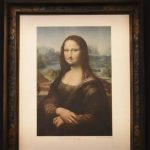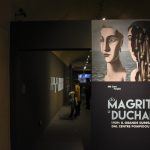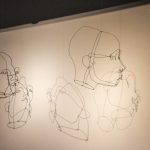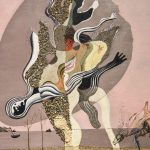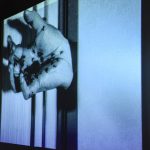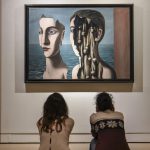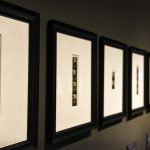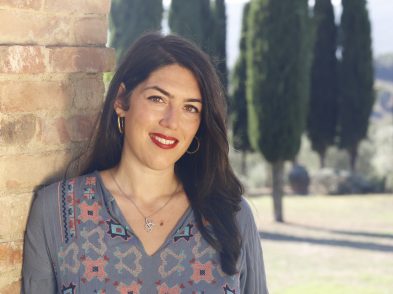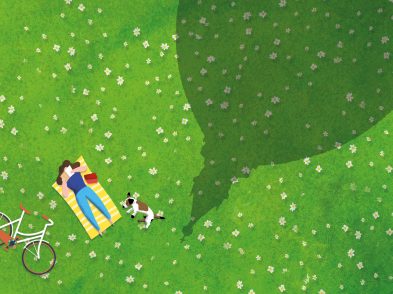“The Mona Lisa is so universally known and admired by everyone that I have been very tempted to use it to cause a scandal. I tried to make those moustaches really artistic.”
—Marcel Duchamp on his 1919 “readymade” work L.H.O.O.Q.
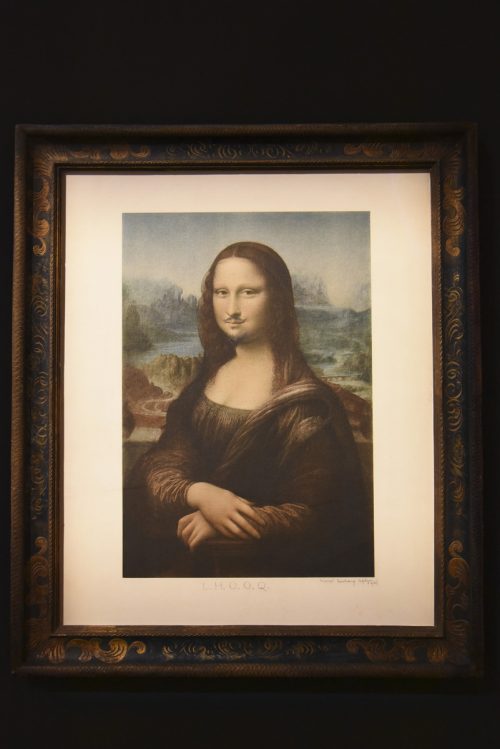
The exhibition underway at Pisa’s Palazzo Blu is not for the art initiate or weekend culture vulture, diving as it does into the depths of Great Surrealism from the Centre Pompidou.
From Magritte to Duchamp is the first time the Parisian institution has loaned a set of masterpieces to Italy thanks to the curatorship of Didier Ottinger, assistant director of Centre national d’art et de culture Georges-Pompidou, Musée national d’art moderne, Paris. Approximately 150 works await open-minded visitors willing to explore the strange Surrealism that profoundly changed twentieth-century art. Paintings, sculptures, objects, drawings, collages, installations, photographs and archival documents line the walls and halls of Pisa’s foremost exhibition space to illustrate the extraordinary adventure of avant-garde Surrealism through masterpieces produced in and around 1929 at the height of the movement, but at an all-time low internationally due to the Wall Street Crash and the Communist International crisis. That year, French writer, poet and anti-fascist André Breton published the Second manifeste du surréalisme, which excommunicated Surrealists reluctant to commit to collective action.
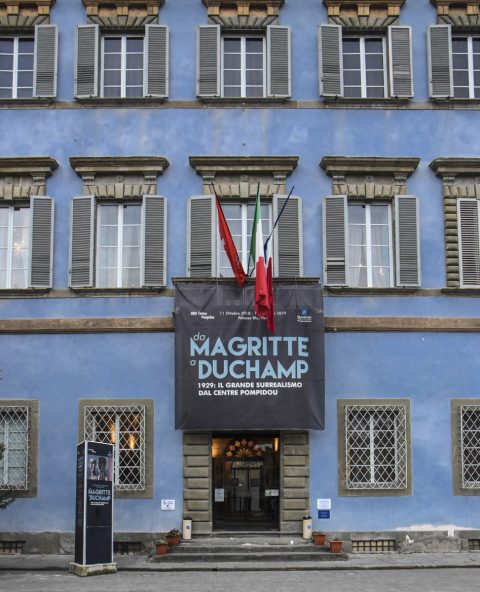
- Photos by Marco Badiani
- Photos by Marco Badiani
- Photos by Marco Badiani
- Photos by Marco Badiani
- Photos by Marco Badiani
- Photos by Marco Badiani
- Photos by Marco Badiani
Works by Marcel Duchamp, Max Ernst, Giorgio De Chirico, Alberto Giacometti, Man Ray, Joan Miró, Yves Tanguy and Pablo Picasso all feature in the show, but René Magritte and Salvador Dalí steal our gaze through their impactful imagery. The Belgian artist’s Le double secret is an iconic painting occupying 114 by 162 centimetres, which examines the superficial nature of images and the myriad ways in which they break down on the canvas. From a background of sky and sea, two huge sectioned faces emerge, the artist’s recurrent metal spheres striking forth from the right-hand visage. Dalí’s collage paintings Invisible Sleeping Woman, Horse, Lion and Rotten Donkey focus on the macabre theme of putrefaction. Equally attention-grabbing is Marcel Duchamp’s L.H.O.O.Q., a postcard reproduction of the Mona Lisa on which the French-American pencilled a moustache and beard, and sacrilegiously added the acronym, a French play on words that translates as “she has a fire down below”.
Further eroticism comes as an out-of-the-blue red light room on the first floor (a parental guidance panel marks the spot) featuring Man Ray’s Aline et Valcour, a reworking of Marquis de Sade’s novel of the same name, illustrations of the male gland for poetry anthology 1929 and jointed figures in sadistic sexual positions titled Mr and Mrs Woodman, plus several intimate dreamworks by Czech Surrealist graphic artist Jindřich Štyrský. Try as you might, your eyes are ultimately drawn to the wooden penis cast at the centre of the tiny space: Objet désagréable (Disagreeable Object) by Alberto Giacometti, a Swiss sculptor.
The final say lies in wall-mounted words by founder and central member of the French Surrealist movement, Benjamin Peret: “I now regard Surrealism as the only valid and disinterested undertaking, until proven otherwise, as it alone leads to the complete freedom of the mind.” Challenging, confusing and curious, it’s an exhibition that sets minds free and tongues wagging.
Da Magritte a Duchamp. 1929: Il Grande Surrealismo dal Centre Pompidou
Palazzo Blu, lungarno Gambacorti 9, Pisa
Until February 17
www.palazzoblu.it

